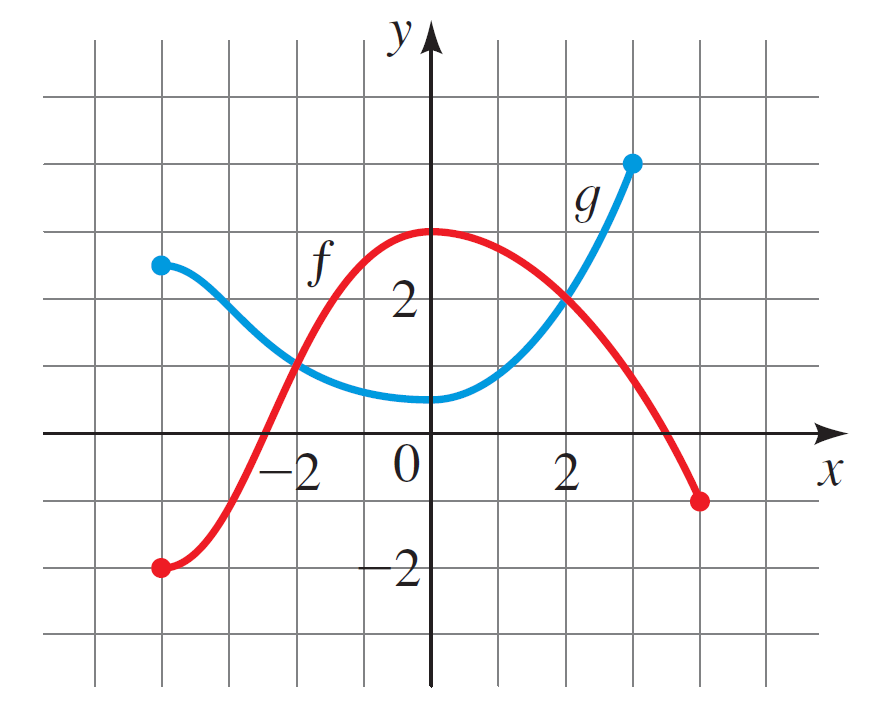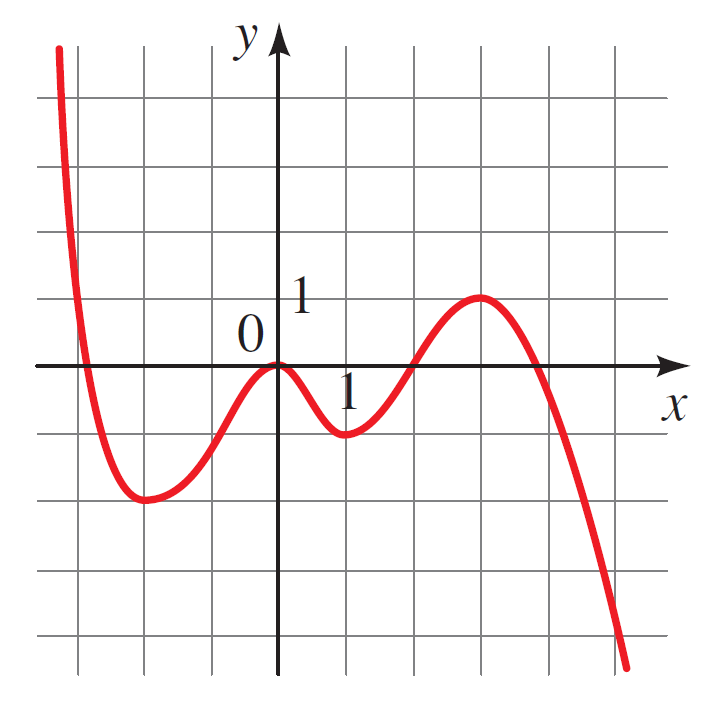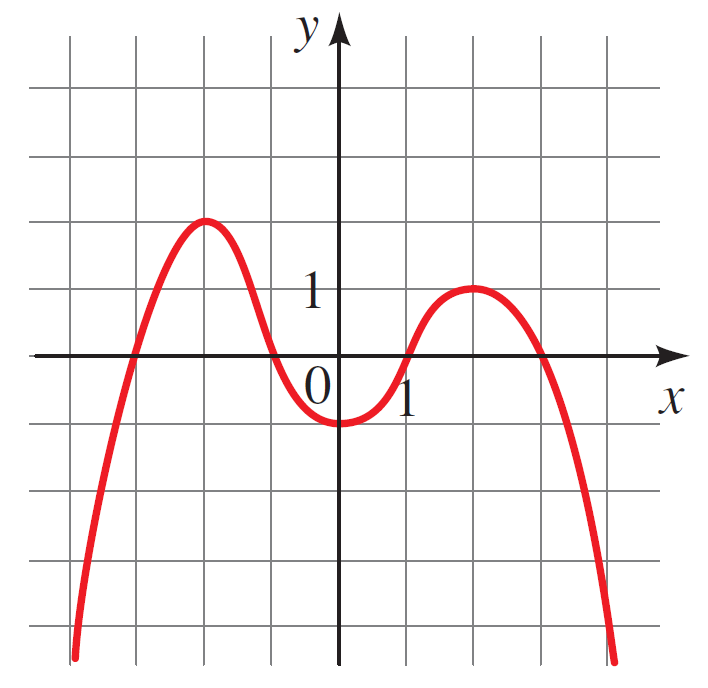Homework 5
Directions:
- Show each step of your work and fully simplify each expression.
- Turn in your answers in class on a physical piece of paper.
- Staple multiple sheets together.
- Feel free to use Desmos for graphing.
Answer the following:
- Suppose your friend was given a function \[f(x) = x^2 - 3\] and they are asked to find $f(x + h) - f(x)$. Your friend ends up writing \[f(x + h) - f(x) = x^2 - 3 + h - x^2 - 3\] Identify the two mistakes that were made.
- Find the domain of the following functions:
- $f(x) = \dfrac{1}{\sqrt{2x - 1}}$
- $f(x) = \dfrac{1}{x\sqrt{2x - 4}}$
Hint Use the zero product property when setting denominator to zero. - $g(x) = \sqrt{x-2} - \dfrac{2x}{\sqrt{-x + 3}}$
- Let \[f(x) = \begin{cases} 3x + 2 & x \geq 2 \\ x^2 - x & x < 2\end{cases}\] Evaluate the following:
- $f(0)$
- $f(1)$
- $f(2)$
- $f(3)$
- $f(4)$
- Let \[f(x) = \begin{cases}-1 & x < -1 \\ x & -1 \leq x \leq 1 \\ -1 & x > 1\end{cases}\] Evaluate the following:
- $f(-2)$
- $f(-1)$
- $f(0)$
- $f(0.99)$
- $f(1)$
- $f(2)$
- Sketch a graph on the coordinate plane for the following functions using the table. Feel free to verify your graphs with Desmos.
- $f(x) = 1-x^2$
- $g(x) = x^3 + 1$
- $f(x) = \begin{cases} -x - 1 & x \leq 1 \\ x + 1 & x > 1\end{cases}$
- $f(x) = \begin{cases} x & x > 1 \\ x^2 - 1 & x \leq -1\end{cases}$
- $f(x) = \begin{cases} 1 & x \geq 2 \\ -1 & x < 2 \end{cases}$
- $g(x) = \begin{cases} x & x > 0 \\ 1 & x = 0 \\ -2x + 3 & x < 0 \end{cases}$
- Draw a curve in the plane that is not the graph of a function.
- Is this expression a function? Why or why not? \[f(x) = \begin{cases}x^2 - 3 & x \geq 0 \\ -x - 4 & x \leq 0\end{cases}\]
- Given the two functions $f$ and $g$
- What is $f(0)$?
- What is $g(3)$?
- Solve the equation $f(x) = g(x)$.
- Solve the equation $f(x) < g(x)$.
- Solve the equation $f(x) \geq g(x)$.
- On what intervals is $f(x)$ increasing and decreasing?
- On what intervals is $g(x)$ increasing and decreasing?
- What is the local maxima of $f(x)$?
- Solve the following equations/inequalities with 1.5 methods or using the graph. You can use Desmos (but graph both graphs on the homework you will submit).
- $x - 2 = 4 - x$
- $x^3 + 3x^2 = -x^2 + 5x$
- $x^3 + 3x^2 < -x^2 + 5x$
- $16x^3 + 16x^2 = x + 1$
- $1 + \sqrt{x} = \sqrt{x^2 + 1}$
- Find the increasing/decreasing intervals and all local maxima/minima and the location at which they occur:
- What is the average rate of change of $f(x)$ on $(x, x + h)$ defined as?
- If a function has negative average rate of change on $(a, b)$, must it be decreasing on $(a, b)$? If not, draw a counterexample.
- Find the average rate of change for the following functions between the given values. Fully simplify when necessary.
- $f(x) = \sqrt{x}; \qquad (x, x + h)$
Hint Rationalize the numerator. - $f(x) = x^3 - 4x^2; \qquad (0, 10)$
- $f(x) = 3x - 2; \qquad (2, 3)$
- $f(x) = 1 - 3x^2; \qquad (2, 2 + h)$
- $f(x) = \dfrac{1}{x}; \qquad (x, x + h)$
- $f(x) = \sqrt{x}; \qquad (x, x + h)$
- Which transformations should be last?
- If I have a base function $f(x)$, explain in English what the following transformations will do to $f(x)$:
- $f(x + 2)$
- $f(-x)$
- $-f(x) - 3$
- $-f(-2x + 4)$
- $3-f\left(-\frac{1}{2}x + 2\right)$
- Suppose \[f(x) = \sqrt{x} \qquad g(x) = \sqrt{-x - 2} \qquad h(x) = \sqrt{- x + 2} \qquad i(x) = \sqrt{-(x + 2)}\]
- Is $g(x)$ horizontally shifted two units to the right from $f(x)$? Why or why not?
- Is $h(x)$ horizontally shifted two units to the right from $f(x)$? Why or why not?
- Is $i(x)$ horizontally shifted two units to the right from $f(x)$? Why or why not?
- Suppose \[f(x) = x^3 \qquad g(x) = \left(-x - 4\right)^3 \qquad h(x) = \left(-x + 4\right)^3 \qquad i(x) = (-(x+4))^3\]
- Is $g(x)$ horizontally shifted four units to the left from $f(x)$? Why or why not?
- Is $h(x)$ horizontally shifted four units to the left from $f(x)$? Why or why not?
- Is $i(x)$ horizontally shifted four units to the left from $f(x)$? Why or why not?
- Write out the list of transformations in the order needed to transform the parent function into $f(x)$.
- $f(x) = \sqrt{x + 4} - 3$
Hint Parent is $g(x) = \sqrt{x}$ - $f(x) = 2-(x-1)^2$
Hint Parent is $g(x) = x^2$ - $f(x) = 4 - \sqrt{-2x + 4}$
Hint Parent is $g(x) = \sqrt{x}$. Don't forget to factor out $-2$. - $f(x) = -2\lvert{-x - 1}\rvert + 3$
Hint Parent is $g(x) = \lvert x \rvert$. Don't forget to factor out $-1$.
- $f(x) = \sqrt{x + 4} - 3$


